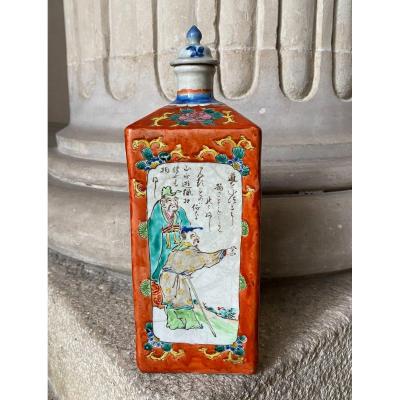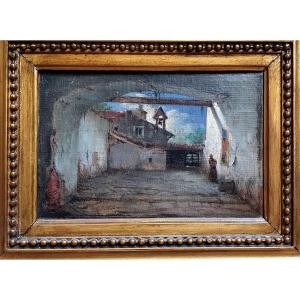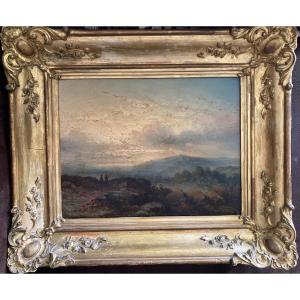Oil on canvas in very good condition, not relined, old inscriptions on the back which locate the views and an old attribution to the French painter Jean-Victor Bertin (1767-1842).
The frames are in gilded wood from the Louis XVI period.
Dimensions of the frames 27x24 cm
The Passy barrier was a toll barrier of the enclosure of the Farmers General. The Passy barrier was located on the quai de Billy, now avenue de New-York, at the corner of rue de la Montagne, now rue Beethoven. From the Passy barrier, the toll wall ran along the quay on the side opposite the river (buildings on the current Avenue de New-York from Rue Beethoven to Rue Le Nôtre and a little beyond this street along the current Trocadéro gardens) then climbed the Chaillot hill parallel to the current Rue Le Tasse to the Sainte-Marie barrier located at the corner of the Passy cemetery and the Place du Trocadéro. In this climb, the wall passed at the boundary between the domain of the Visitation convent of Chaillot, which extended over the current Trocadéro gardens and that of the Minimes convent.
The barrier built by the architect Claude Nicolas Ledoux was placed on the road from Paris to Versailles and was an important crossing point.
It was through the Passy barrier that on the evening of October 6, 1789, the king, the queen, the dauphin and the royal family, accompanied by 100 deputies and the Parisian crowd, entered Paris shouting "We are bringing back the baker, the baker's wife and the little baker's boy!"
The second view of Paris, which is that of the Grenelle district around 1820, shows the Chaillot hill mainly occupied by the estate of the Visitation Sainte Marie and its convent buildings.


















































 Le Magazine de PROANTIC
Le Magazine de PROANTIC TRÉSORS Magazine
TRÉSORS Magazine Rivista Artiquariato
Rivista Artiquariato